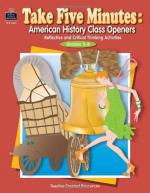|
This section contains 1,257 words (approx. 5 pages at 300 words per page) |

|
An Increasingly Urban Landscape.
The late nineteenth century was a testing ground for such cherished American ideals as optimism, individualism, and the myth of the self-made man. Americans had long subscribed to an agrarian idyll: a belief that—in Thomas Jefferson's words—"cultivators of the earth" were "the most vigorous, the most independant [sic], the most virtuous" of citizens. Over the course of the nineteenth century, however, the face of the American landscape changed. In 1850 the population of New York City stood at just under 700,000; by 1900 it had risen to more than 3.4 million. The population of Chicago skyrocketed from approximately 30,000 to 1.7 million during this same period. Many of the new city dwellers were immigrants; many were all but incapacitated by poverty. Not until the twentieth century did America's urban population equal its rural population, but by the end of the nineteenth century the...
|
This section contains 1,257 words (approx. 5 pages at 300 words per page) |

|




